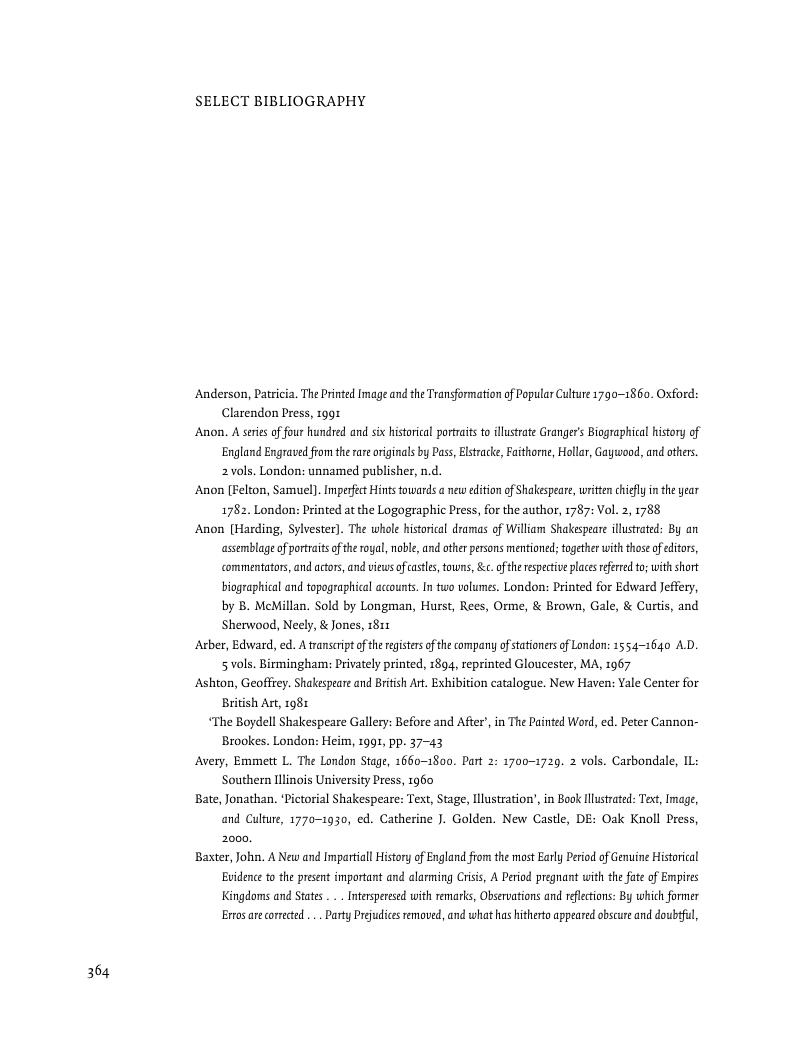Book contents
- Frontmatter
- Dedication
- Contents
- Colour plates
- List of Illustrations
- Acknowledgments
- Chapter 1 Play, page and image
- Chapter 2 Spatial narratives and Rowe’s Shakespeare
- Chapter 3 Rococo and Reflection: Gravelot, Hayman and Walker
- Chapter 4 Bell, performance and reading
- Chapter 5 ‘Ornaments, derived from fancy’:1 Illustrating the plays, 1780–1840
- Chapter 6 The growth of feeling: Boydell, Taylor and the Picturesque
- Chapter 7 The extra-illustrated edition
- Chapter 8 Early Victorian populism: Charles Knight and Kenny Meadows
- Chapter 9 Selous, Gilbert and reader involvement
- Chapter 10 Decline and renewal
- Notes
- Select Bibliography
- Index
- Plate Section
- References
Select Bibliography
Published online by Cambridge University Press: 05 February 2014
- Frontmatter
- Dedication
- Contents
- Colour plates
- List of Illustrations
- Acknowledgments
- Chapter 1 Play, page and image
- Chapter 2 Spatial narratives and Rowe’s Shakespeare
- Chapter 3 Rococo and Reflection: Gravelot, Hayman and Walker
- Chapter 4 Bell, performance and reading
- Chapter 5 ‘Ornaments, derived from fancy’:1 Illustrating the plays, 1780–1840
- Chapter 6 The growth of feeling: Boydell, Taylor and the Picturesque
- Chapter 7 The extra-illustrated edition
- Chapter 8 Early Victorian populism: Charles Knight and Kenny Meadows
- Chapter 9 Selous, Gilbert and reader involvement
- Chapter 10 Decline and renewal
- Notes
- Select Bibliography
- Index
- Plate Section
- References
Summary

- Type
- Chapter
- Information
- The Illustrated Shakespeare, 1709–1875 , pp. 364 - 374Publisher: Cambridge University PressPrint publication year: 2008



